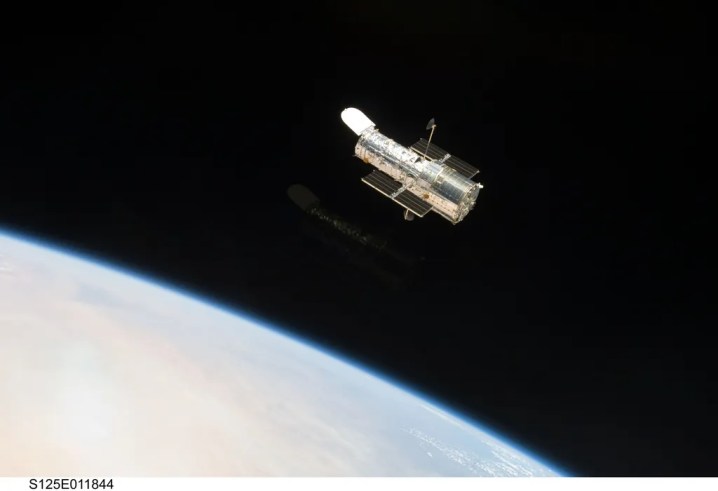The Hubble Space Telescope is back to full operations after spending several weeks in safe mode due to a problem with one of its components. The telescope first experienced issues with one of its gyros on November 19, and was in and out of safe mode several times in the following days. It has remained in safe mode since November 23, but came back online on Friday, December 8.
The problem was caused by one of the telescope’s three operational gyros, which are devices that help to point the telescope in the right direction. Although it would have been possible to operate the telescope with just one of these, that would have resulted in lost observing time as it would take longer to move the telescope to a new target between observations. With all three gyros now back in use, the telescope has returned to science operations.

Currently two of the telescope’s instruments are online, with the other instruments set to be brought back online within the next few weeks. “Hubble’s two main cameras, Wide Field Camera 3 and Advanced Camera for Surveys, resumed science observations Friday,” NASA wrote in an update. “The team is planning to restore operations to the Cosmic Origins Spectrograph and Space Telescope Imaging Spectrograph later this month.”
Although Hubble has been somewhat overshadowed in recent years by the newer and more powerful James Webb Space Telescope, it is important for astronomers to have access to both telescopes, as they operate in different wavelengths. Hubble looks primarily in the visible light wavelength, equivalent to what is seen by the human eye, with some sensitivity to ultraviolet and near-infrared wavelengths as well. That allows it to capture stunning images of cosmic objects such as nebulae or nearby galaxies.
James Webb, on the other hand, operates primarily in the infrared portion of the spectrum, with instruments operating in both near-infrared and mid-infrared wavelengths. That is what allows it to see extremely distant galaxies, which are moving away from us, so their light is shifted out of the visible portion of the spectrum and into the infrared. These very distant and therefore very old galaxies would be difficult or impossible to observe with Hubble as the light from them would be beyond the wavelengths that Hubble can see.
You can get an idea of the different features and types of images collected by Webb and Hubble by looking at comparisons of the same object viewed by each .The two telescopes also work together to create more detailed pictures of the universe around us.
Editors’ Recommendations



